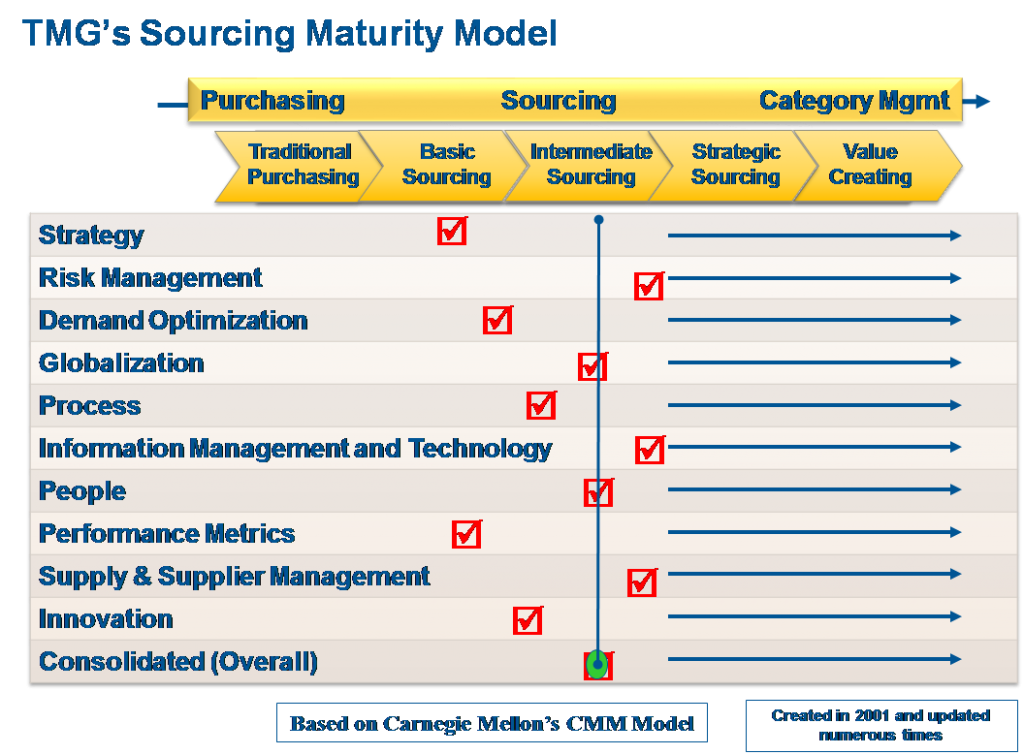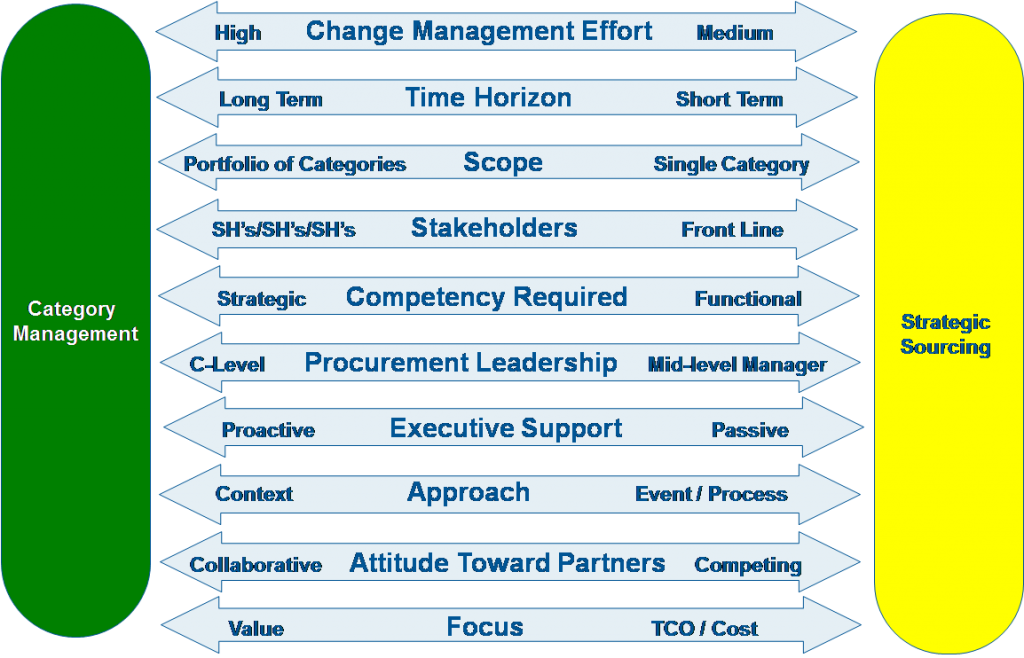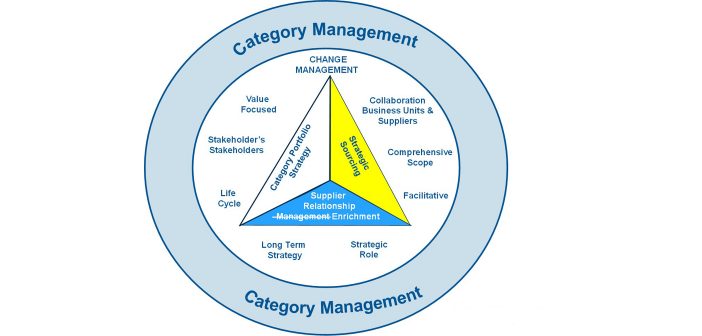“How many of your organizations are doing Strategic Sourcing?” I am sure almost all hands went up and if I ask the same question regarding Category Management there would still be numerous raised hands up. I wish I had even a nickel for every time an organization told me they are already doing Category Management OR a penny for every organization that says they are already doing Strategic Sourcing. Just because you have been given the title of Category Manager or your organization is labeled as “Strategic Sourcing” does not mean that is an accurate representation of where you are on the Sourcing Maturity Model. There are numerous definitions for both Strategic Sourcing and Category Management and only those organizations that are really executing those processes can give you the “right’ definition. By the way, there are VERY few companies that are doing true Category Management. So how do you know where you and your organization land on the maturity model?

Let’s take a look at a quick chart. This picture is a sample of the primary differences between Strategic Sourcing and Category Management. By the way, they are not completely disparate processes – Strategic sourcing is in fact one of the lower level strategies utilized in Category Management:

One of the issues may be that Procurement professionals do not have a clear definition of the two processes. Here are the two definitions we like to use.
Strategic Sourcing is . . .
a rigorous, fact-based decision process that improves
Total Cost of Ownership AND Increases Internal Business Partner
Value by leveraging the Total Spend of the organization, proactively managing supplier relationships, rationalizing demand, streamlining the procurement process and focuses on Business Partner value drivers. (Originally developed by A.T. Kearney; modified by The Mpower Group)
Category Management is . . .
a framework and set of practices used to optimally manage supply categories to meet internal business partner value drivers / objectives. This framework sits above and guides the content and sequencing of lower level methodologies like strategic sourcing and supplier relationship management to satisfy category and business objectives. A category is a grouping of goods or services that have a similar supply and usage characteristics to meet business objectives. Category Management places significantly more emphasis on collaboration and building relationships with both internal business partners and suppliers than the lower level methodologies. (Originally developed by The Hackett Group; modified by The Mpower Group)
If you are still NOT clear where your organization is, here is a quick Test.
If your organization is doing Strategic Sourcing:
- You are following a structured X (5, 7, 9, etc.) step process across all categories of spend
- “Categories” are sourced globally across all business units within your company
- Your primary metric is cost savings BUT you are starting to move beyond that
- Your primary objective is to maximize TCO (total cost of ownership)
- Your work is being done in cross-organizational / cross-functional teams
- You have integrated Change Management into your Strategic Sourcing process
- You have a set of tools and technology to support your process
- Your organization is viewed as an internal consulting practice and is raided internally for talent
- You have a competency model in place that goes beyond functional competencies (procurement process, negotiating, contracting, etc.) and starts to focus on strategic competencies (problem solving, collaboration, facilitation, communication, change management, etc.)
If your organization is doing Category Management:
- Change Management is a core competency of your staff
- The leader of your organization sits at the C-level (Chief Procurement Officer)
- Your metrics are aligned with your internal business partners goals and business objectives (value drivers)
- Your primary objective is to meet the business objectives (value drivers) of your internal business partners (while ensuring you are getting a competitive price in the marketplace)
- You focus on growing the top line of your business(s) in collaboration with your suppliers
- You are invited to staff meetings of your key business units and are a trusted advisor to those leader(s)
- You are actively engaged with your suppliers and seek to build collaborative relationships as opposed to adversarial ones
- You work closely with your suppliers to understand their business, and how your relationship can be mutually beneficial to both parties
Sorry, but I could go on and on (I’m already way over my word count 😊! This topic is of great interest to me as I know it is to all of you. I have been part of this industry for many, many years and it is very rewarding to see how far we have come and the tremendous impact we are having and continue to have. Where is your organization on the sourcing maturity model? Where ever you are today, your objective should be to continue to challenge yourself and your group to move toward “value creating”. By the way, once you get there, you will certainly encounter an additional level to attain 🙂 .
I look forward to your comments. Please let us know what you think and join in the conversation . . . . . .



1 Comment
Pingback: Do You Know the Difference between Strategic Sourcing and Category Management – Moving from Strategy to Execution! - News You Can Use